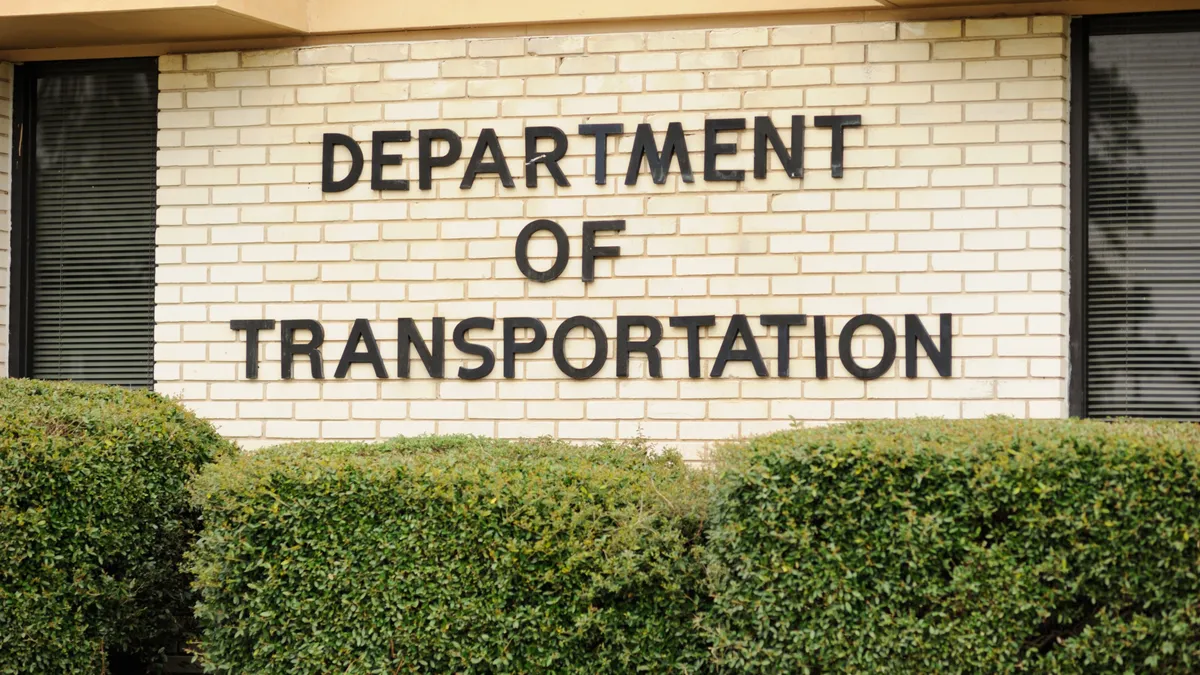All 50 states, along with the District of Columbia and Puerto Rico, submitted EV charging deployment plans by the Aug. 1 deadline for funding under the National Electric Vehicle Infrastructure formula program.
The $5 billion program created by the bipartisan infrastructure law is designed to create a network of EV charging stations every 50 miles along the interstate highway system or within one mile of an interstate exit, with the Biden administration’s goal of a total of 500,000 electric vehicle chargers nationwide. Federal funds will cover up to 80% of NEVI project costs.
“Americans need to know that they can purchase an electric vehicle and find convenient charging stations when they are using Interstates and other major highways,” Deputy Federal Highway Administrator Stephanie Pollack said when the program was announced.
But each state is different in size, geography, population and travel patterns, and the plans expressed a variety of concerns.
Electric grid readiness varies
As sales of EVs continue to increase, and more charging stations begin to dot the U.S., new demands will be placed on electric utilities. States including California, Florida and Texas said grid capacity was not a concern.
- California’s plan states that an analysis of its grid “suggests the state will be able to handle millions of EVs in the near term.”
- Almost 700,000 EVs are expected on Florida’s roads by 2030, according to data in its plan, but the state’s electric utilities estimate an impact of less than 1.5% on net energy load by then.
- Texas estimates it will be home to 1 million electric vehicles by 2031, but it determined that the “potential impact on the overall statewide grid appears minimal.”
Other states note that their power grid may not have the capacity now or in the near future as EVs become more common.
- Vermont warns that “unmanaged or unplanned ... EV charging could cause utilities to incur significant costs to maintain grid reliability and create challenges for grid operators,” adding that some locations “may also necessitate intensive grid upgrades and buildout.”
- New Mexico believes its grid can handle current and near-term charging demand, but “capacity will become a concern in future years as charging infrastructure and EVs become more ubiquitous.”
- Alabama registered just over 7,500 plug-in hybrid and battery-electric vehicles in 2021 and it states that its utilities are working to meet changing needs over the long term, but it advises any business or government entity considering large-scale EV deployment to contact its local utility as it begins planning.
Questions on how states cover funding gaps
States will largely rely on the private sector to build out the charging station infrastructure and, in many cases, to fund the remaining 20% of the project costs not covered by the federal grant. The Pennsylvania Department of Transportation says it will look to third parties like “site hosts and/or EV network companies” to pay for the nonfederal portion.
“Public-private partnerships are certainly the right way to go,” said Blink Charging President Brendan Jones. Businesses like Blink can charge drivers to use the EV charging stations.
The private sector also looks to bring efficiency and customer-friendly technology to states and cities, Jones said. “We're working with our manufacturers to bring more efficient machinery [and] open networking to the marketplace, so that, as much as possible, everything can be interconnected.”
Colorado, for example, expects the developer or host of each charging site to provide the 20% matching funds, but it said in its plan that it is open to allowing the use of other state funds to offset some portion of the required matching funds.
Supply shortages, Buy America requirements could constrain rollout
Supply chain and semiconductor shortages could hinder production of EV charging equipment, especially when combined with Buy America provisions where the U.S. doesn’t “have a depth and breadth of DC fast charging manufacturing,” said Jones.
- Mississippi considers potential shortages of charging station equipment a risk factor. Noting that the national rollout will cause demand for fast-charging stations to “skyrocket,” it says that “increasing demand and a decrease in supply may cause significant setbacks to charging station construction.”
- New Jersey and Wisconsin listed concerns about the Buy America provision, which requires that EV supply equipment contain more than 55% domestic content and be manufactured in the United States. In its NEVI plan, New Jersey states that this requirement “may delay implementation by several years.”
That concern was also noted in an April 1 letter from the American Association of State Highway and Transportation Officials to Transportation Secretary Pete Buttigieg. The letter states that “There must be a pragmatic application of Buy America requirements to the EV infrastructure industry to ensure that deployment doesn’t come to a halt.”
Jones said the White House and Transportation Department have been open to discussions with industry around this issue. Ultimately, collaboration will be key to successful implementation, he said.
“There’s still questions around NEVI, and there’s still concerns, but I think there are solutions to all of it,” Jones said. ”It's going to require a lot of collaboration. Collaboration with the utilities and the power providers making sure we have the right solutions and the right amount of energy to support these chargers.”
By Sept. 30, the Federal Highway Administration will respond to each state’s department of transportation to either approve the submitted plan or notify the state if changes are needed. It will make funds available immediately upon approval.















